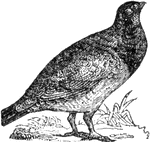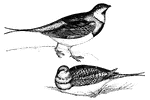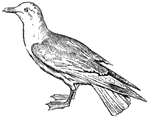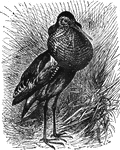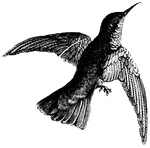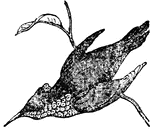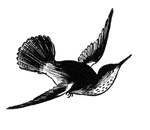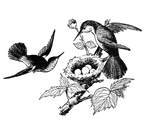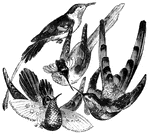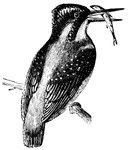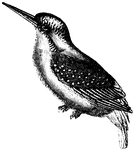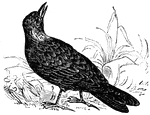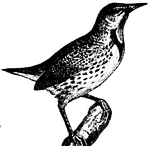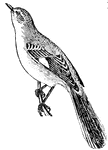
Ruffed Grouse
The ruffed grouse is an American bird that likes hill-sides densely covered with evergreens or birch.
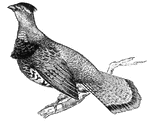
Ruffed Grouse
The ruffed grouse lives in the woods. It makes a loud noise by beating its wings rapidly (drumming).
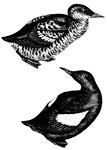
Guillemot
The guillemots have the beak long, straight, convex above, somewhat angular below. They only come ashore…

Marsh Hawk
Birds of prey usually have stout, hooked beaks and sharp, curved claws, fitting them for clutching and…

Heron
Herons are found on the edges of rivers, lakes and marshes and live on fishes, reptiles and sometimes…

Heron
Herons are found on the edges of rivers, lakes and marshes and live on fishes, reptiles and sometimes…

Heron
Herons are found on the edges of rivers, lakes and marshes and live on fishes, reptiles and sometimes…
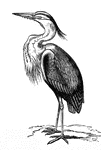
Heron
These wading birds mostly spend their time wading about in shallow water, feeding upon small fishes,…
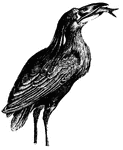
Boatbill Heron
This heron has a bill like an overturned boat. It also has a beautiful black crest that falls down behind…
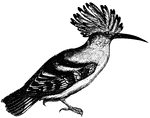
Hoopoe
The hoopoes are easily recognized from the double range of plumes which form an arched crest on their…
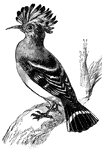
Hoopoe
The hoopoes are easily recognized from the double range of plumes which form an arched crest on their…
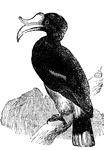
Hornbill
The hornbill family are remarkable for the very large size of the beak, and the large protuberance that…
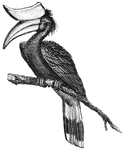
Hornbill
The hornbill family are remarkable for the very large size of the beak, and the large protuberance that…
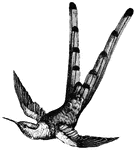
Bar-Tailed Hummingbird
The nest of the hummingbird is a masterpiece. It is about half the size of an apricot.
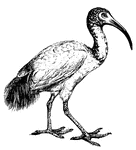
Sacred Ibis
Wading birds with long, slender bills found in warmer climates of both hemispheres. The Sacred ibis…

Jacamar
Their habits are little known; but it is certain that they live isolated or in pairs, that they are…

Jacana
These birds have long toes and claws that permit them to walk easily across leaves of tropical aquatic…
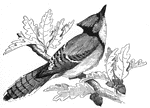
Blue Jay
Blue jays are abundant in the central and eastern states. They are characterized by blue-gray feathers…

European Jay
The European Jay is brownish red tinged with grey. It has a patch of ultramarine blue banded with black…
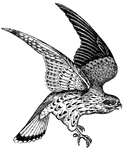
Kestrel
With sharp claws, penetrating vision, and enormous strength, it is easy to understand that these birds…

Kiwi
The Kiwi, a native of New Zealand is closely related to the Ostrich but much smaller. It is also a flightless…

Kiwi
The Kiwi, a native of New Zealand is closely related to the Ostrich but much smaller. It is also a flightless…
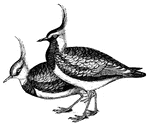
Lapwing
Lapwings may often be seen settling in fields recently ploughed, where they can find an ample supply…
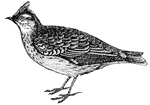
Lark
The lark is the living emblem of happy, peaceful labour, the songster of the cultivated earth, (Figuier,…

Loon
The loon is a diving bird that finds its food under the water. It will dip its bill into the water and…

Loon
The loon is a diving bird. Its peculiar cry, sometimes resembling a hysterical laugh, has given rise…
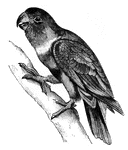
Lory
The Lory is a climbing bird distinguished by the fact that the feet have four toes each, of which two…
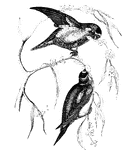
Love birds
Love birds are the smallest of this group; their plumage varies in shades according to the climates.…

Lyre bird
Lyre-bird, an Australian bird, the male of which has the tail feathers arranged to look like a lyre.
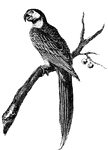
Macaw
The Macaws, the largest of the Parrots, are recognizable from their bare cheeks and long tapering tails.

Magpie
A bird of the crow family, closely related to the jays but distinguished by having a much longer and…
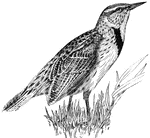
Meadowlark
The meadowlark does not travel in flocks. It eats grains and is characterized by a dark band cross its…
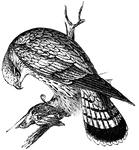
Merlin
With sharp claws, penetrating vision, and enormous strength, it is easy to understand that these birds…
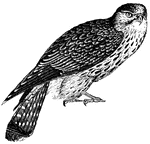
Merlin
With sharp claws, penetrating vision, and enormous strength, it is easy to understand that these birds…
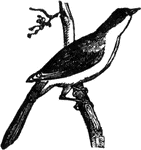
Mockingbird
The Virginia Mockingbird is endowed with a perfection of voice far exceeding any other bird in creation,…
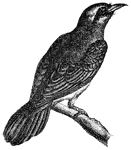
Momot
The Momots are birds still very imperfectly known. They are placed by systematists near the Toucans…
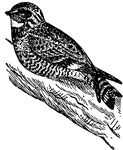
Nighthawk
An American insect-catching bird related to the whip-poor-will, a member of the goatsucker family.
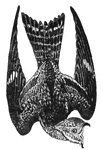
Nighthawk
The nighthawk is fit for catching insects on the wing by their very wide mouth, the gape extended far…

Nightingale
Nightingale, a bird famous on account of its brilliant song, which for quality and variety is not exceeded…
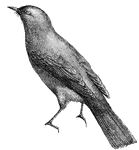
Nightingale
Nightingale, a bird famous on account of its brilliant song, which for quality and variety is not exceeded…
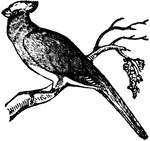
Nightingale
Nightingale, a bird famous on account of its brilliant song, which for quality and variety is not exceeded…
